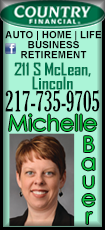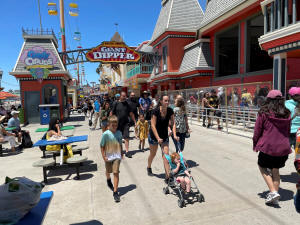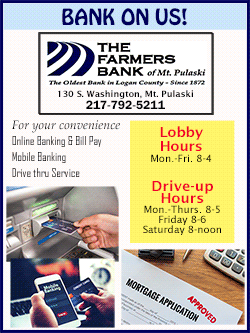The living's not easy for worker-hungry U.S. businesses this summertime
 Send a link to a friend
Send a link to a friend
 [June 30, 2021]
By Ann Saphir and Howard Schneider [June 30, 2021]
By Ann Saphir and Howard Schneider
SANTA CRUZ, Calif./WASHINGTON (Reuters) -
Loading riders onto the Giant Dipper, California's oldest roller coaster
and the star attraction of the Santa Cruz Beach Boardwalk, is not how
Karl Rice thought he'd be spending his summer.
But Rice, whose family runs the Northern California amusement park, got
a later-than-usual start in hiring workers after reopening in April,
following a year-long shutdown triggered by the coronavirus pandemic. So
far, he has managed to scrape together only about half of the roughly
1,900 employees needed to handle the busy summer season.
The 114-year-old amusement park is buzzing with customers reveling in
their post-lockdown freedom, and with the season's biggest crowds yet
expected over the July 4 holiday weekend, "it's sort of all hands on
deck," Rice said.
All the executives are working attractions or food stands at least once
a week this summer, and Rice, the president of the Boardwalk, takes on
two eight-hour shifts a week, usually helping guests in and out of the
Dipper, an historic roller coaster.
As the United States approaches its Independence Day celebrations, which
the Biden administration hoped would mark the country's symbolic
emergence from the pandemic, the economy is both back to normal, and -
as Rice's experience shows - very far from it.

The mask-wearing and social distancing rules of the last 15 months are
largely gone. Unrestricted sellout crowds at Major League Baseball
stadiums and restaurant waiting lists are back in vogue.
But there is something of a speed limit on the economic rebound. The $93
million in North American box office sales for the top 10 movies last
weekend was the best showing since Valentine's Day in 2020, before the
onset of the pandemic, according to IMDB, yet weekly revenue remains
roughly half or less of what it was before the crisis.
"Who knew reopening would be as hard as it has been?" Richmond Federal
Reserve President Thomas Barkin said on Monday as he recounted just a
few of the anomalies in the economy: Theme parks are limiting their
hours because they can't hire enough workers, despite high unemployment;
auto factories are slowing production because of supply shortages in an
era of record sales.
Based on output alone, the United States has recovered. According to the
latest estimate from the Atlanta Fed's GDPNow model, the economy has
surpassed its $19.3 trillion pre-pandemic level. When it comes to jobs,
however, it is still more than 7 million in the hole, with likely many
months to go before anything like a full labor market recovery is
reached.
Unusually for a recession, people have money to spend, and from an
unusual source: the government. Ongoing unemployment insurance payments,
the expansion of child tax credits and other federal aid are keeping
households flush. Unclear is when or if private-sector wages will take
up the slack as the aid ends.
And consumers are spending. Spending on services - the lion's share of
household outlays, which make up 70% of the economy - has been ticking
up, particularly in recent weeks. Many restaurants are crowded and
owners complain of difficulties hiring.
But the overall leisure and hospitality industry is still missing 15% of
the jobs it had before the pandemic. By contrast, jobs in finance are
effectively back to normal at just over 99% of the pre-pandemic level.
With the number of new COVID-19 infections in the United States falling,
people are eating out again, with seated diners back to pre-pandemic
levels, data from OpenTable shows.
Business is brisk at Farley's, a San Francisco cafe; sales are running
at about 70% of pre-pandemic levels but are expected to rise in July,
once co-owners Amy and Chris Hillyard hire enough staff to reinstitute
pre-pandemic hours. At their bigger operation, Farley's East in downtown
Oakland, sales are only about 40% of pre-pandemic levels.
[to top of second column]
|

People walk past the Giant Dipper rollercoaster ride at the Santa
Cruz Beach Boardwalk, amid the coronavirus disease (COVID-19)
outbreak, in Santa Cruz, California, U.S. June 28, 2021.
REUTERS/Nathan Frandino

Chris Hillyard expects a boost next week after Bay
Area Rapid Transit employees resume working for three days a week at
their Oakland headquarters around the corner from Farley's East, but
he projects monthly losses until the fall, when he hopes larger
numbers of office workers will return.
U.S. air travel has climbed back steadily but is only at about 75%
of 2019 levels, largely due to the slow rebound of international and
business travel. TripActions, a travel management company, said
bookings for air and ground transport as well as hotels have more
than quadrupled since the start of 2021, but have only reached 60%
of their pre-pandemic level. International business travel is at
18%.
The labor market remains far from normal.
Though there are several million more unemployed than before the
pandemic, U.S. businesses also report a record number of job
openings. Companies want workers, and workers are quitting jobs in
large numbers, presumably to take others that are more rewarding.
But net job growth has been slow compared to the numbers needed to
get back to pre-pandemic levels.
Governors in Republican-led states have blamed sluggish
job-to-worker matching on enriched federal unemployment benefits
that they feel encourage people to stay home, and have moved to
cancel those extra payments.
William Spriggs, a Howard University economics professor and chief
economist for the AFL-CIO labor group, suggested a different
explanation: Skilled workers in slower-to-recover industries are
waiting to resume careers and not feeling compelled to take any job
that comes along.
Trades workers in the entertainment industry, he said, "don't want
to work at McDonald's," but are waiting for Broadway shows, live
concerts and movie production to resume. Analysts who assume the
people who are unemployed can be matched one to one with the jobs
that are open right now "are off compared to where the market is."

At the Boardwalk, the pandemic shutdown and lack of much advance
notice about the reopening meant that seasonal hiring this year
started months later than usual. When it did, competition for
workers was stiff because all local businesses were ramping up at
once.
Applicants surged after the park offered a $300 bonus every two
weeks for those clocking at least 30 hours a week, said Sabra Reyes,
the Boardwalk's director of human resources. The limiting factor
now, she said, is how fast she can train and get new hires into
their jobs.
"We've been hiring at full speed," said Reyes, who works the
amusement park's Cave Train ride each week. "But it was and it's
still a struggle."
(With reporting by Nathan Frandino; Editing by Dan Burns and Paul
Simao)
[© 2021 Thomson Reuters. All rights
reserved.] Copyright 2021 Reuters. All rights reserved. This material may not be published,
broadcast, rewritten or redistributed.
Thompson Reuters is solely responsible for this content.
 |